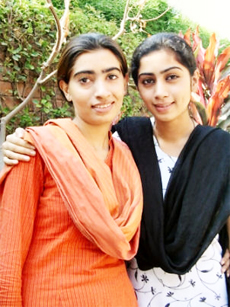fitness news
![]() ,
,![]()
Font size Women’s Health
Health Issues for Pakistani Women
– Reported, January 13, 2012
 Womens health issues in Pakistan take a backseat among the other cultural and social responsibilities that she undertakes. Womens mortality rates during pregnancy are among the highest in the world, and with poverty and one of the worst rankings in the world for gender empowerment, there is currently very little being done to alleviate the problem (Asian Development Bank, 2009). Women and girls are four times as likely to suffer from malnutrition, one of the most significant being iron deficiency anemia. Communicable diseases among women are an easy source of infection for the offspring as well, which is due to many factors of poor hygiene, poverty, lack of education and awareness, and inability to access good health facilities (Asian Development Bank, 2009).
Womens health issues in Pakistan take a backseat among the other cultural and social responsibilities that she undertakes. Womens mortality rates during pregnancy are among the highest in the world, and with poverty and one of the worst rankings in the world for gender empowerment, there is currently very little being done to alleviate the problem (Asian Development Bank, 2009). Women and girls are four times as likely to suffer from malnutrition, one of the most significant being iron deficiency anemia. Communicable diseases among women are an easy source of infection for the offspring as well, which is due to many factors of poor hygiene, poverty, lack of education and awareness, and inability to access good health facilities (Asian Development Bank, 2009).
Women currently constitute around fifty one percent of the total population of Pakistan. Most of these women reside in poor or village areas of Pakistan, where there are no health facilities available. The young ages of marriage and childbirths and lack of experienced staff lead to complications during delivery and afterwards, that are a significant cause of morbidity and mortality among young women. Under and malnutrition is a common finding. There is a serious deficit in the use of family planning practices with no say of woman in this regard. Also, women run a very high risk of contracting conditions such as HIV due to male dominant society patterns.
Mental illnesses at present are virtually unaccounted for women. Domestic violence is a common practice in Pakistani culture, and women themselves passively support these practices by not raising their voices against it (Rogers, nd). Women are also important bread earners of the family, although their health or their needs are seldom met. Respiratory tract infections including tuberculosis is a very common finding in rural women or women belonging to poor families. The lack of government initiatives to give women more rights and freedom regarding their sexual and reproductive health, and freedom from male dominant culture of society makes it impossible to imagine any immediate improvement in the status of women (Rogers, nd).
Hepatitis, AIDS, tuberculosis and sexually transmitted diseases is the new wave of infections that have led to a high rate of deaths among women of Pakistan. Pakistani women also suffer from high rates of breast and oral cancers. Chronic illnesses such as diabetes, hypertension, thyroid problems etc. all are very prevalent. The main issue is the lack of any education and awareness, coupled with poverty and male dominant societal patterns, which do not allow women to seek medical help. Women are often refused to be consulted by a male physician, and female doctors remain deficient, which increases problems in access to care. Poor health in women leads to poor health and development of children. Hence a whole generation of children is also suffering from the plights of poor health of women.
Credits:
http://www.asian-women-magazine.com/women-health/health-issues-women-pakistan.php